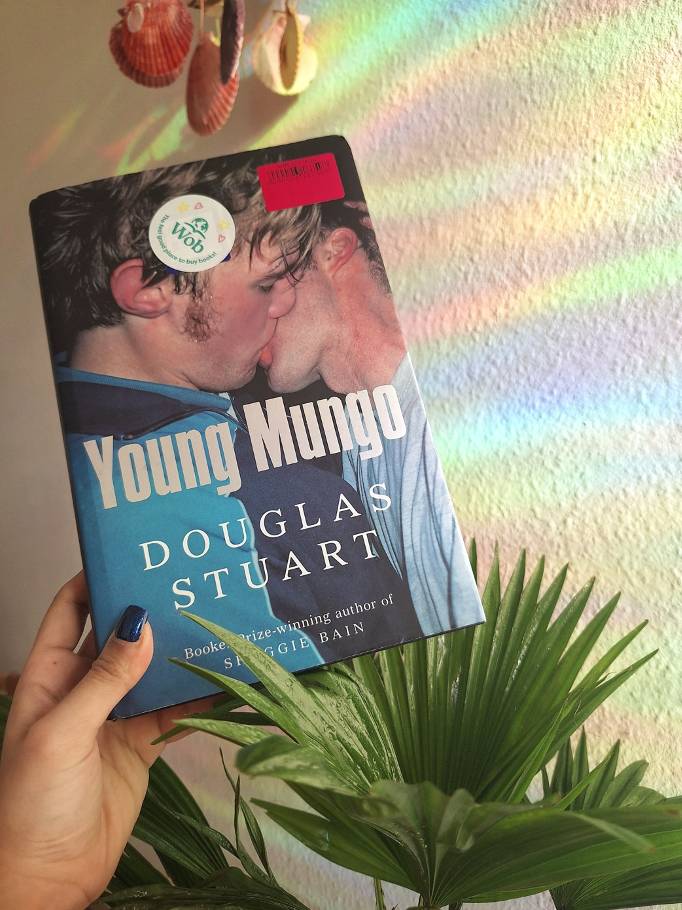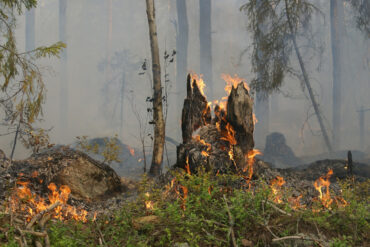Amidst the harrowing depths of violence and intolerance, Douglas Stuart’s Young Mungo delicately unveils a subtle yet enduring message of gay joy. In a narrative laced with despair, fleeting instances of familial acceptance emerge as poignant beacons of hope – but why do such subtle, ephemeral moments resonate so powerfully, especially in queer narratives?
By Ravgun Kaur
Picture: Pixabay (edited), CC0
In August 2024, I had the chance to attend the University of Göttingen’s Edinburgh Summer School – two weeks filled with rich learning, exploration, and the vibrant energy of queer culture. Held at the University of Edinburgh, the program was timed to coincide perfectly with the city’s iconic Fringe Festival, which created an exhilarating atmosphere of inclusivity and celebration. The festival featured an array of queer-themed events, including Rent, a powerful musical tribute to love and resilience; Queer Folk’s Tales, where performers from across the festival gathered to share personal stories of their queer experiences; and Bi-Topia, a comedic solo act that explored one bisexual person’s journey of self-discovery within the LGBTQ+ spectrum. There were also reimagined Shakespearean plays, which transformed classic love stories into explicitly queer romances while preserving the emotional depth, wit, and drama of Shakespeare’s original text.
In this setting, the choice to offer a course on Queer Scottish Writing felt especially inspired. Edinburgh, with its rich literary heritage and vibrant LGBTQ+ community, provided the ideal setting for the study of queer literature. Taking this course was not only an educational journey but an inspiring experience. We began with foundational LGBTQ+ concepts and terminology. We then moved into more complex discussions on intersectionality, queer temporality, and hegemonic masculinity. The course was an ideal fit for the setting, bringing together education and cultural immersion.
What made this course exceptional was the collaborative spirit of its classroom. Questions weren’t merely answered; they were shared, discussed, and enriched by a chorus of perspectives from peers. This spirit of inquiry encouraged me to overcome the fear of asking questions that might be perceived as misguided or uninformed. For instance, during one discussion, I posed a question that, as someone with a foundational understanding of queer studies, I recognized to be inherently complex: Without attachment to gender, how does one express their sexuality? Framing this from my position as a cisgender woman, I acknowledged the limitations of my perspective – one shaped by conventional norms and societal expectations. This question, though rooted in a potentially self-centered connection between gender and sexuality, was met with thoughtful engagement and sparked meaningful dialogue. This discussion prompted me to critically examine how my assigned gender at birth has influenced my understanding of sexuality, including how heteronormative frameworks often shape our desires and behaviours unconsciously. In a subject as inherently diverse as queer literature, this exchange felt essential to enrich my perspective on gender and sexual identity, turning the class into a dynamic microcosm of the queer community itself. It wasn’t just a lesson – it was a dialogue, an experience as expansive and layered as the city hosting us.
The Queer World of Young Mungo
Edinburgh, with its gothic castles and cobblestone streets, often veiled in dramatic winds, felt like the perfect metaphor for the literature we explored. Amid the shadows cast by its historic architecture, pride flags fluttered brightly in the sunshine, creating a landscape of stark contrasts. This dichotomy of darkness and joy is beautifully mirrored in Douglas Stuart’s Young Mungo, which made it the perfect choice for the Queer Scottish Writing class. The novel delves into themes of hardship and struggle, yet it radiates moments of queer love and resilience – a poignant reflection of a city where beauty and complexity coexist.

Set against the backdrop of Glasgow, amidst the sectarian strife between Catholic and Protestant factions, Young Mungo masterfully encapsulates Scotland’s quintessentially gothic atmosphere, weaving together ominous themes and shocking violence that vividly echo the nation’s turbulent history. For a detailed plot summary, check out this article on Litlog. The narrative centres on Mungo, a gay teenage boy entangled in a web of deeply troubled relationships – one with his alcoholic mother, another with his domineering and violent brother, who personifies toxic masculinity, and yet another with a society equally marred by violence and intolerance. And then there is James – or is there? For Mungo, even the glimmer of hope in falling in love with James cannot shield him from the cascade of horrors that continue to befall him. The story adopts a relentless approach, where every conceivable misfortune, or rather deliberate cruelty inflicted by unaccepting people, that could befall the protagonist, does so with unyielding ferocity.
Interspersed throughout the profoundly sorrowful narrative are passing moments of hope that subtly shift the reader’s perspective from the persistent unaccepted roles of queer characters to a positive, accepting familial atmosphere without altering the tragic trajectory Stuart has carefully crafted for his protagonist. This delicate balance, combined with the cleverly devised open ending, gives the novel a new and unexpected dimension. One might expect a bleak conclusion given the novel’s dark theme, but the ambiguity of the ending – where it remains unclear whether Mungo reunites with James or walks away – alongside small moments of familial acceptance, offers a glimmer of hope. These elements allow Stuart to explore gay joy even in the face of hardship, adding a layer of depth and surprise to the novel’s impact.
Romantic Hope or a Queer Trope?
Amid the rare glimmers of optimism within the narrative, there are two ineluctable instances where familial acceptance of queer characters is subtly yet powerfully portrayed. These moments, though fleeting, resonate deeply because they bring about a momentary respite in the tragic trajectory of events.
Mungo’s teenage lover, James, subscribes innocently to a gay landline network to connect with others like him. Unaware that the subscription incurs a fee and appears on the telephone bill each month, James only realises this when his mother, who quietly pays for it, passes away. This silent act of support and acceptance from a parent, though only remembered in hindsight, brings a sense of calmness and satisfaction for James. In another brief yet poignant scene, Mungo hitches a ride from a stranger named Calum, who, sensing the young boy’s distress, intuitively understands its root cause. This kind-hearted middle-aged man expresses deep love and acceptance for his »artistic« – a euphemism for gay – son, hoping to comfort and support Mungo, whom he barely knows.
Lightbulb Moments: Insights from the Classroom
What topics captivated you during your studies and never let you go? Was there a seminar you once took or an exam you completed that led to an important new realization? Our series »Lightbulb Moments: Insights from the Classroom« is dedicated to making exactly these moments visible. Here, authors reflect on their personal »Lightbulb Moments« — those pivotal moments during courses or lectures that left a lasting impact.
The texts are published at irregular intervals and can be found here.
I found myself repeatedly asking: Why did Douglas Stuart include these tiny narratives? The characters involved do not significantly impact the story, nor do these little anecdotes bring about any major changes. More importantly, why do these subtle, almost understated mentions linger so vividly in my memory? This inevitably led to further intriguing questions: Why do authors use instances of familial acceptance as a tool of wish fulfilment in queer narratives? Does this suggest that the bar for queer romances is set so low that even a brief glimpse of acceptance can evoke a sense of euphoria within the reader? These questions are crucial for understanding the intricate dynamics of reader perspective, literary mechanisms, and, most importantly, queer experiences.
Cliché – Yay or Nay?
In our course, we explored queer tropes through Valerie Rohy’s “Queer Narrative Theory”, which highlights how historically, queer narratives often centre on violence, tragedy, or the damnation of queer characters, and underlines an open ending as a device for and in queer storytelling. While Douglas Stuart employs classic tragic tropes, such as a forbidden love hidden from family and various forms of violence that the characters have to endure.
Stuart’s open-ended conclusion, too, adheres to the somber, often tragic elements that are common in queer narratives. He embraces queer storytelling traditions rather than subverting them. This choice feels deliberate and purposeful, as he uses these tropes to craft the story he wants to tell while simultaneously altering its overall message with concealed moments of acceptance and hope. Rather than presenting familial validation as a transformative or central part of the narrative, Stuart renders positive family interactions as elusive and transient. This way, he makes the conscious choice of adhering to melancholic queer cliches, and also break out of them through simultaneous echoes of an alternate reality of positive familial acknowledgement.
It is remarkable how the smallest moments- whether a passing scene in Young Mungo or two weeks in Edinburgh – can ripple across our understanding of ourselves and the world. Just as Stuart’s fleeting glimpses of acceptance linger with readers, the Queer Scottish Writing class left an enduring impact on me, transforming how I engage with queer narratives. The power of Young Mungo lies not just in its tragedy, but in those delicate moments of hope – the very moments that remind us that change, however fleeting, is always within reach.






